Kit that Fits: Developing Women’s Sportswear
In an era when women’s rights to equality are recognised, if not yet won, why do female athletes face such challenges finding gear that fits and performs as well as their male counterparts’?
Over the past 100 years, the design of sports uniforms has been evolving at top speed. There was a day when football players wore rugged cotton crewnecks, woollen socks and heavy cleats that weighed them down, and their shirts were devoid of sponsor logos. Today they wear kit that is lighter and more breathable than ever, and sponsors pay big bucks to be seen on a team jersey. Uniforms are designed down to the very structure of the fibres for maximum range of motion, minimum skin friction and optimal body temperature. Boots have specially designed studs specifically configured for firm ground, soft ground or artificial turf, ensuring faster turns, better kicks and fewer injuries. Nor is there any end in sight to the improvements that are yet to be made. Sports brands are in a race to design ever better gear to help athletes run faster, jump higher, swing harder and look better while doing so.
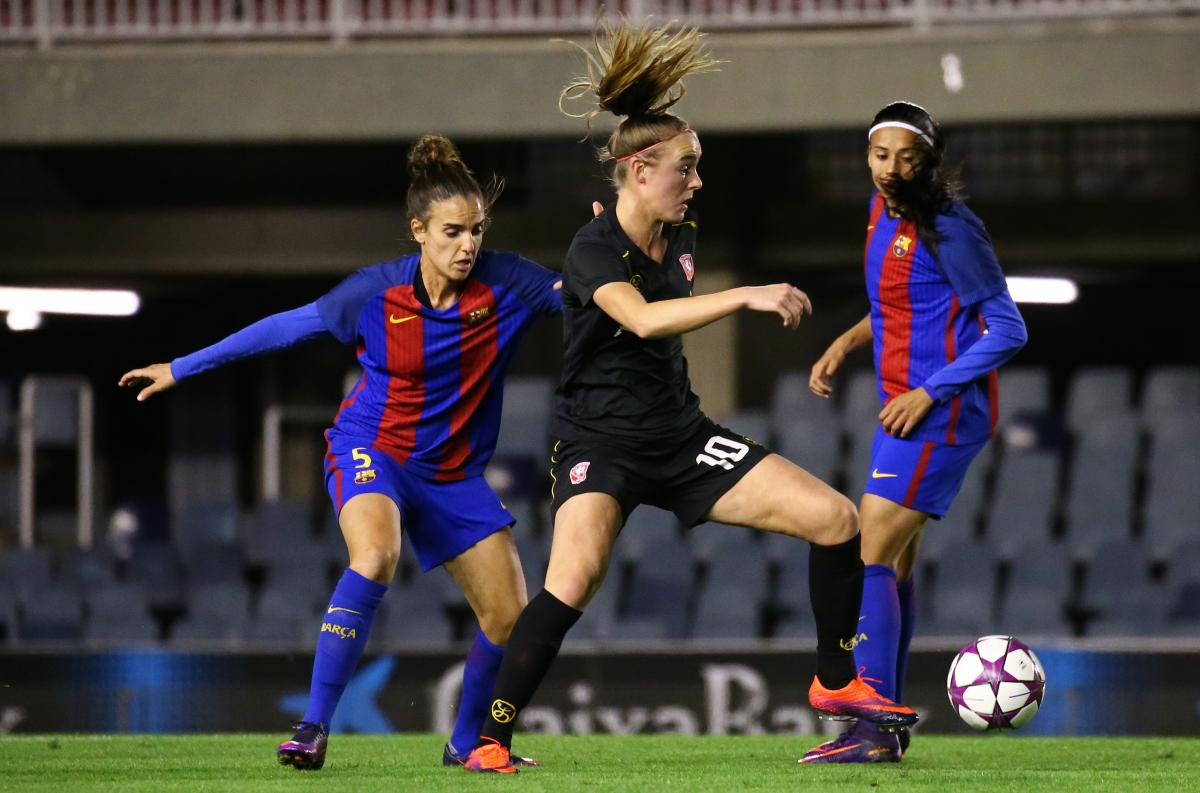
Jill Roord (centre) during the Women’s Champions League match between FC Barcelona and FC Twente. FC Twente uses Liona uniforms that have built-in tights for protection when the athlete slides. Waistbands are wider, and shirts are longer and wider at the hips. (Photo courtesy of Urbanandsport.)
When it comes to the design of team sports uniforms for female athletes, however, it is often quite a different story. Karin Legemate, a retired Dutch professional football player, recalls her experiences with sports uniforms with a mixture of disappointment and wonder. Professional athletes playing for a sponsored team are contractually obligated to wear the sponsor’s uniforms and gear. ‘At AZ, a first division club, our sponsor was Quick, a sports brand that does not have a line for women. As a result, we had to play in the smallest men’s size and in kids’ shoes.’ Because competitions are waged mentally as well as physically, Legemate experienced it as a huge impediment. ‘You stand on the field in a bag. It just looks wrong. It feels wrong. You are an athlete, you want to look like one. So mentally, you are already at 0:1. When you get a free throw, your shirt slides up and exposes your belly. It’s awkward.’ Your standard of play goes down too. ‘The children’s shoes don’t have aluminium studs. When you are playing on grass, you can’t turn as well, you slip, you get injuries quicker, you have to hold yourself back.’ It was not until she became a member of the Dutch national football team that she first experienced a great kit designed for women by the official sponsor, Nike.
According to Legemate, with the right gear you have more confidence and it shows on the field. Without good gear the game becomes less fun for the players, and for the audience as well. ‘When women’s football has a small viewership, sponsors are less interested. Without sponsors, women athletes have to cover all their own costs. It’s already impossible to support yourself as a professional female football player. All of us have to combine it with normal jobs. If you have to pay for your own gear it is just another setback.’
Most sports brands originate in the West, and within the industry there are tremendous hesitations, misgivings and dilemmas around designing sports clothing for Muslim women. Is designing sportswear with head coverings a way to enable these women to play sports, or does it play into the hands of those who suppress women’s rights?
Princess Reema Bint Bandar Al Saud, Vice President of Women’s Affairs at the General Sports Authority, Saudi Arabia, had to make some quick decisions for the team of female athletes participating in the Rio Olympics in the summer of 2016. Because the decision to enter a women’s team—a first in the country’s history—was made quite late, the athletes were offered small sizes of the men’s uniforms that the national team sponsor had created, but even if they had received uniforms designed for women, Princess Reema doubts that they would have been suitable for her team. ‘The sponsoring brand does not yet design for women who cover their hair. In our culture, women cover themselves in public. Covered is also how we dress for formal occasions. The Olympics are a formal occasion.’ Princess Reema wanted to both show the world that Saudi women could compete with the best, and show her country that sending women to the Olympics was a great idea, but in order to do so, she had to find a solution that would allow the women to perform at world-class levels while also being covered according to societal norms.
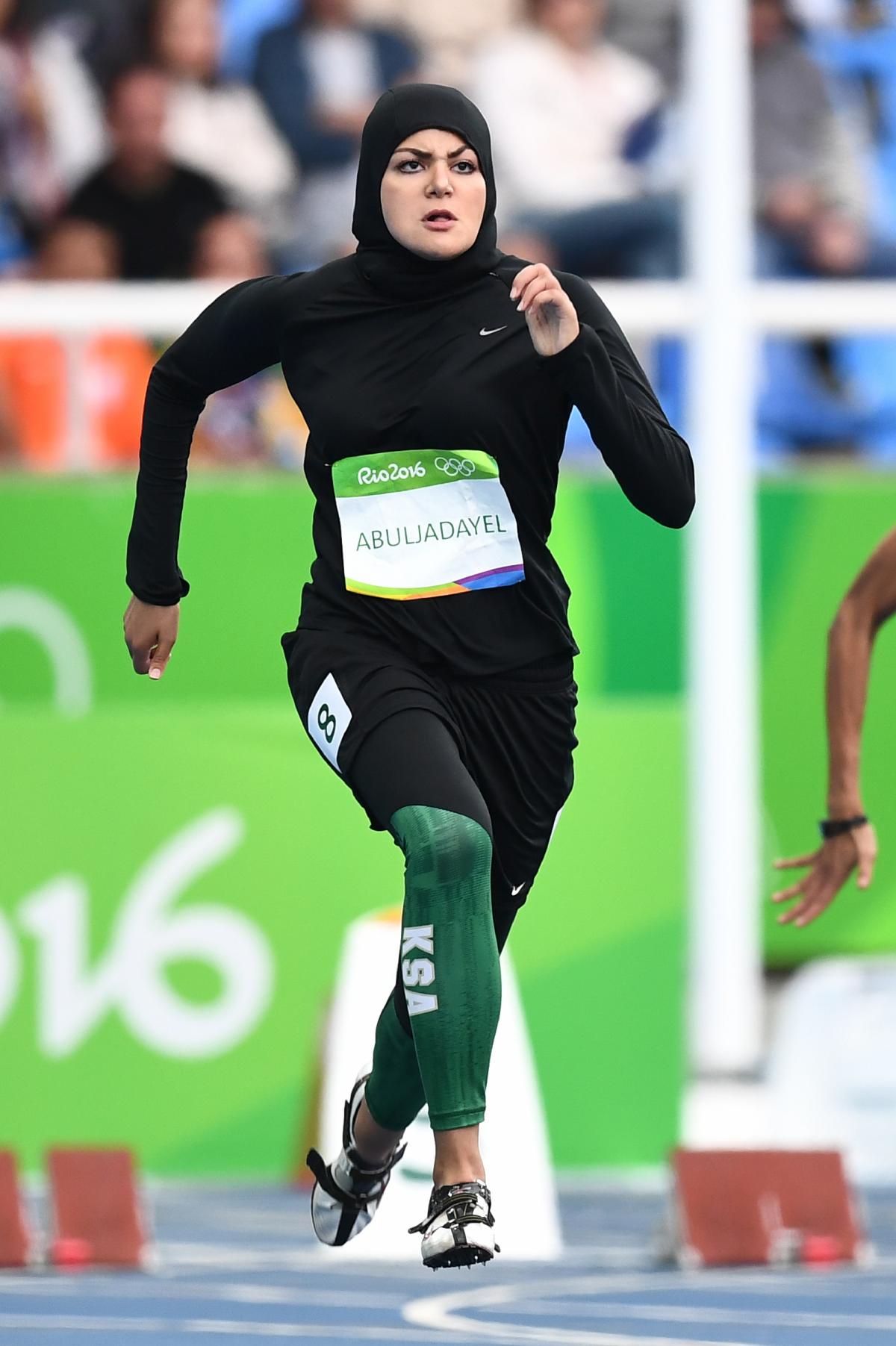
At the 2016 Summer Olympics in Rio de Janeiro, Saudi Arabia entered their women’s team for the first time in their country’s history. The national team sponsor was not able to offer suitable sport uniforms covering the athletes’ hair. Instead, the team turned to high-street brands for prêt-à-porter burkinis and hijabs, modest, yet functional sportswear. In this photo Kariman Abuljadayel competes in the Women’s 100m. (Photo: Jewel Samad/AFP Photo)
She turned to a high-street brand for off-the-rack burkinis and hijabs. ‘We have athletes competing in the marathon. They need to have a uniform that is as aerodynamic as possible and allows them to regulate their body temperature, but our athletes cannot wear a skin-tight body suit even if it covers the entire body and our hair. We need something that is modest and yet enables us to compete with others without being at a disadvantage.’ It is a challenge waiting for the right sports brand or the right designer to take on.
You seem to enjoy a good story
Sign up to our infrequent mailing to get more stories directly to your mailbox.Khalida Popal, former captain of the Afghan women’s national football team, makes a passionate plea for sports brands to create solutions which allow Muslim women to participate in sports. She recently collaborated with Danish sports brand Hummel to create the official Afghan sports uniform, which includes a line for women, with or without hijab. She is quick to point out that the debate should not be about whether or not the sports hijab represents a restriction of women’s rights. The debate should be about allowing all women to participate, regardless of their religion or background. ‘Before we had the Hummel uniform it was very difficult for me, as a leader of the team, to find comfortable clothing that did not irritate or disturb the players. And it was so hot! With the built-in hijab we look professional, and it helps parents to give their consent for their daughters to play sports.’
Parents do not necessarily ask their daughters to wear a hijab because of their own religious beliefs. In places like Afghanistan there are those on the hunt for any woman who crosses the line of strict behavioural and clothing codes, and they inflict gruesome punishments on trespassers. Requiring girls to play in hijabs is often as much a sign of love and concern for their safety as it is a cultural or religious habit. In Popal’s words, ‘The uniform with the built-in hijab breaks barriers. It is a way to say: look, sport is not against religion. Sports and religion are not adversaries. We’ve received a very positive response from within Afghanistan.’ Interestingly, most of the negative responses have come from people in the West who believe that the hijab curbs women’s rights, but Popal firmly disagrees. ‘You have to understand: it gives us opportunity. Now we can play. Without it we could not.’
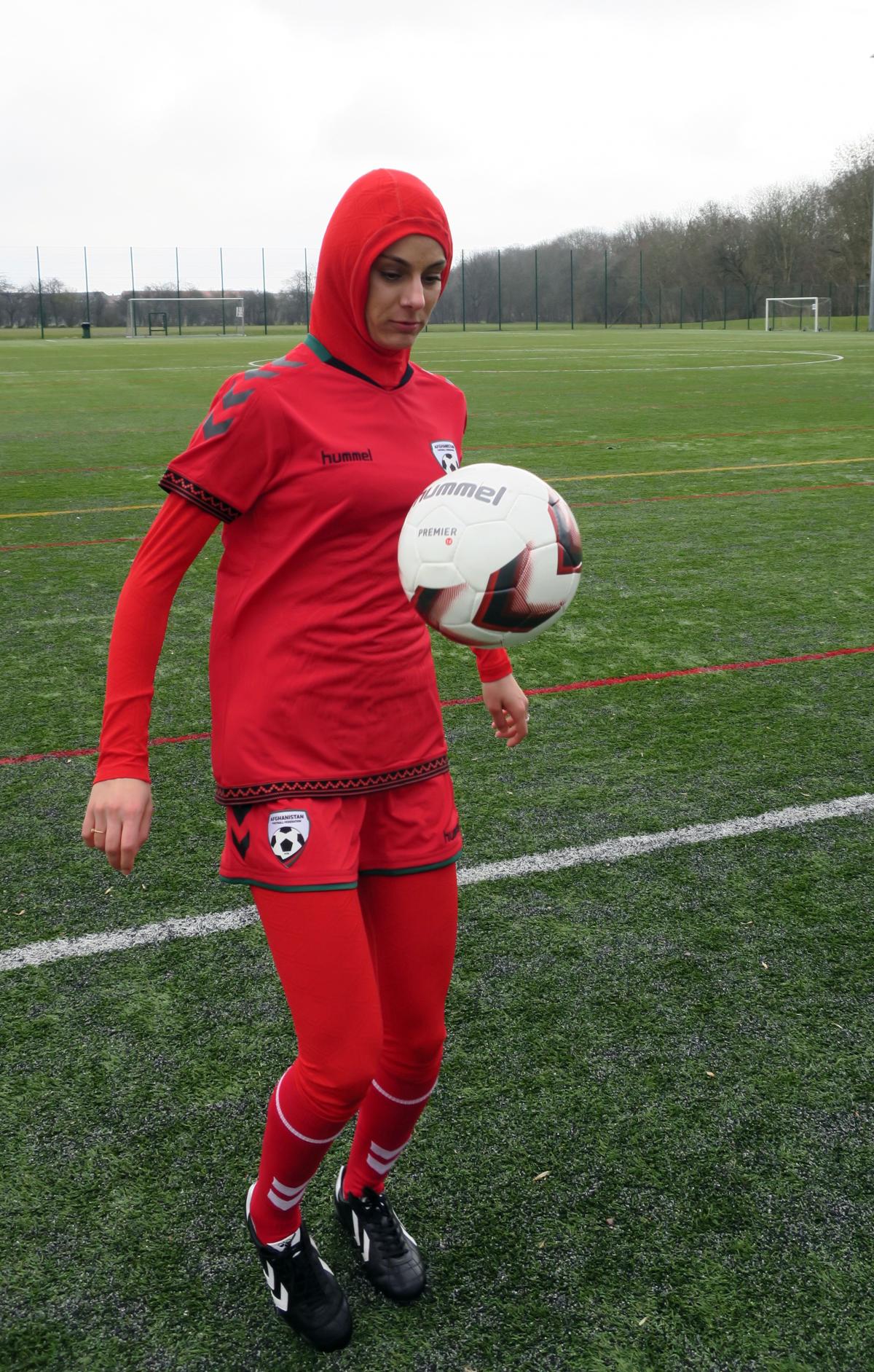
Danish sportswear company Hummel developed the new Afghan national women’s football jersey with a hijab integrated into a base-layer shirt that enables the country’s female footballers to play while meeting cultural standards of modesty. (Photo: AP Photos/Jan M. Olsen)
Given the increasingly hard lines drawn around Islam, taking on the project of designing the Afghan women’s national team football kit was not one that any sports company would have easily embraced. Hummel’s global marketing director Anne Skovrider thinks that it is key that Hummel is an independent company with an owner who is not averse to risk. ‘When the idea of the national team kit for Afghanistan arose, Christian Stadil, the owner, went to Kabul himself and saw how hard it is to play without the right gear.’ Still, the work was not a political statement for Hummel. ‘Players in the Afghan women’s national team come from different backgrounds. Some of them are daughters of Afghani parents, who were born in Germany or the Netherlands. They may not want to wear the hijab during a match in the USA, so we have made it optional. The women decide. We do not take a stand on politics or religion. We want to meet the Afghani people where they are, and right now that is enabling women to play football.’
Despite the fact that the national team now has its own uniform, for the aspiring amateur football player in the country, there are still no options. According to Popal, ‘No other companies have jumped in to create a uniform with hijab for the general market, unfortunately.’
While one side of the world is engaged in a discussion of how to cover up, the other is in a battle over whether or not to strip down. Some people consider the sex factor in women’s uniforms as key to improving the viewership of women’s sports. During an interview in 2004 Sep Blatter, then the head of FIFA, said: ‘Let the women play in more feminine clothes like they do with volleyball. They could, for example, have tighter shorts. Female players are pretty, if you’ll excuse me for saying so, and they already have some different rules to men, such as playing with a lighter ball. That decision was taken to create a more female aesthetic, so why not do it with fashion?’
Sep Blatter is not alone, and women’s teams across the world have to live with the consequences. In 2008, the Australian women’s Olympic basketball team successfully protested the skin-tight uniforms they were provided with by their management and sponsors. They demanded looser fitting uniforms to reduce the ‘perv factor’, as one player called it.
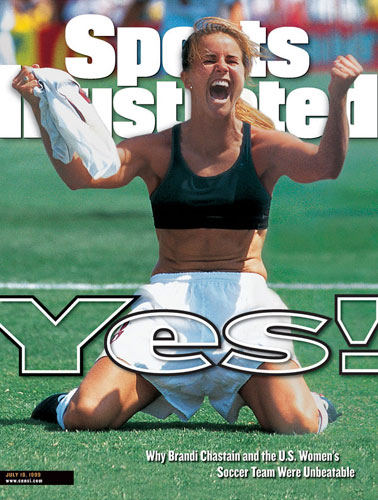
American soccer star Brandi Chastain made history for women athletes when a shot of her celebrating her winning goal in the world championship made the cover of Sports Illustrated, a magazine that formerly only showed women on the cover if they were swimsuit models. The cover made Chastain a household name and the exposure of her sports bra caused sports brands to see the marketability of women’s athletic gear. (Image courtesy of Sports Illustrated.)
‘If sports was only about long legs, then women’s beach volleyball would be the biggest sport in the world,’ remarks Shammy Jacob, former Director of Sustainable Ventures at Nike. ‘Of course performance should come first. Only then is it about looking great as an athlete. But looking great does not equal looking sexy.’ Jacob offers an historic example. In the 1990s, Nike had been working with the American women’s national football team to design their outfits for the upcoming world championships. One of the things the women asked for was a better bra, one designed for sports. ‘To all of our amazement, Brandi Chastain scores the winning goal of the tournament, and celebrates by sliding onto her knees and taking her shirt off, revealing her sports bra.’ The moment was captured in a photo that made the cover of Sports Illustrated and became a landmark image in the history of women’s sports. Jacob rejects the idea that the image was iconic because it was revealing. ‘What the shot showed was an athlete at the top of her game. To have everyone see a woman so fit, so strong, so victorious, and to receive so much attention, that made a world of difference for women’s sports at that time. Nike focused on performance but made sure the styling was also relevant and tasteful.’
Despite the fact that more women are playing and watching sports, and that general viewership for women’s sports is increasing, women’s sports uniforms in most parts of the world remain stuck in a vicious circle. Without evidence of demand, sports brands won’t invest in creating professional gear for women. Without high-quality gear, fewer women play and fewer still play at their best, making games less exciting for spectators and less interesting for sponsors and sports brands, closing the circle of low demand.
One brand that is looking to break the circle is Liona, a new sports brand from the Netherlands, founded by former professional footballer Leonne Stentler. Seeing that no brand was taking up the challenge of providing high-quality gear for women, Stentler decided to jump into the gaping hole in the market. Launched in 2015, Liona is already supplying professional league teams across the country with uniforms. Growing up as a child playing and during her entire professional career, Stentler took the absence of women’s kit as a given. ‘There is no women’s clothing available all the way to the top of the league. It is a huge investment for brands to produce a “second line” for women. And when amateur clubs have to decide where to produce their uniforms, no company will design and manufacture a run of just 100 units. And there are no women on the board who will protest that decision. It is a men’s game; we are not a priority.’
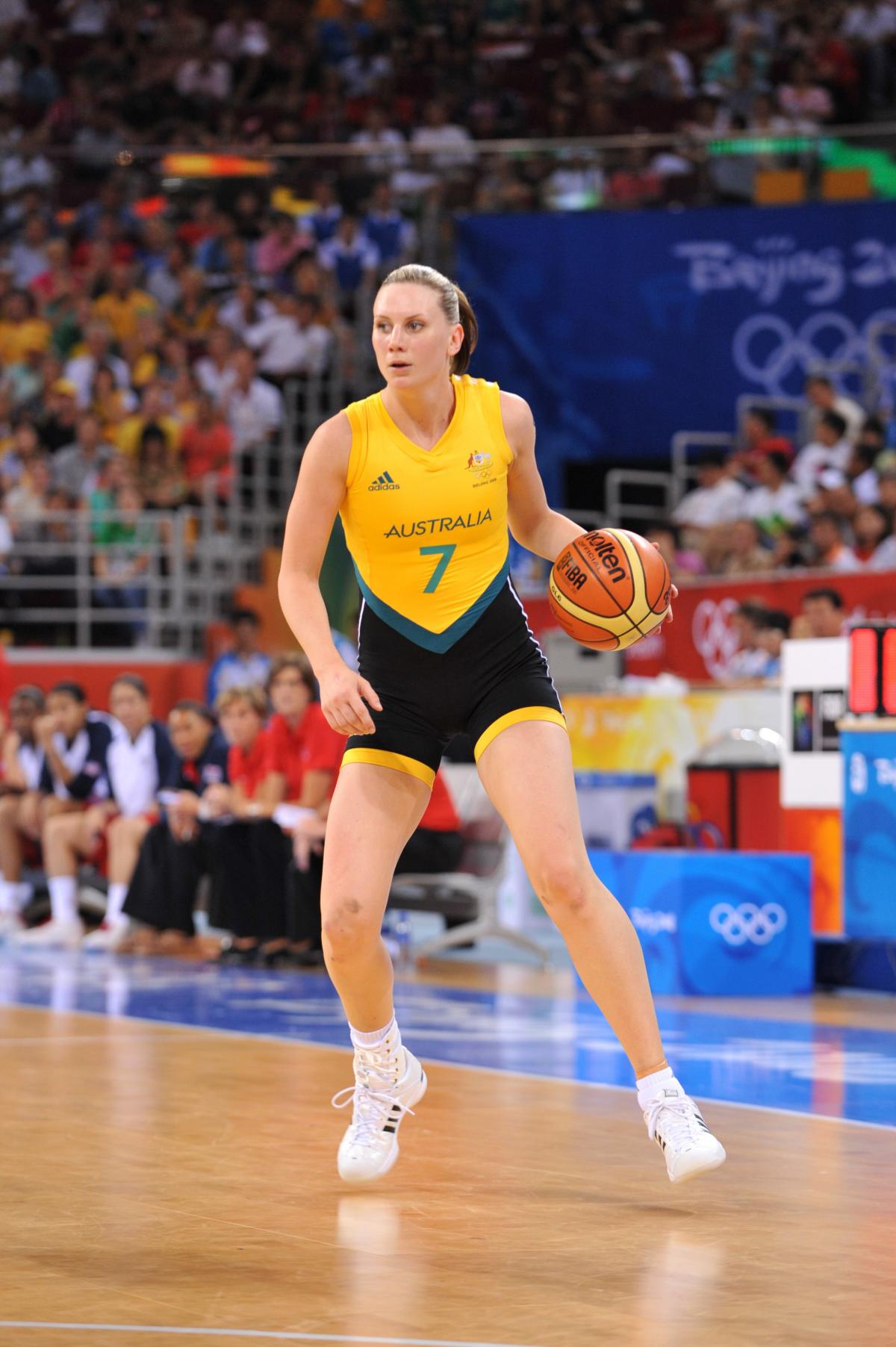
The 2008 Australian women’s Olympic basketball team protested against their uniform, citing its excessive ‘perv factor’. (Photo: Jesse D. Garrabrant/NBAE/Getty Images)
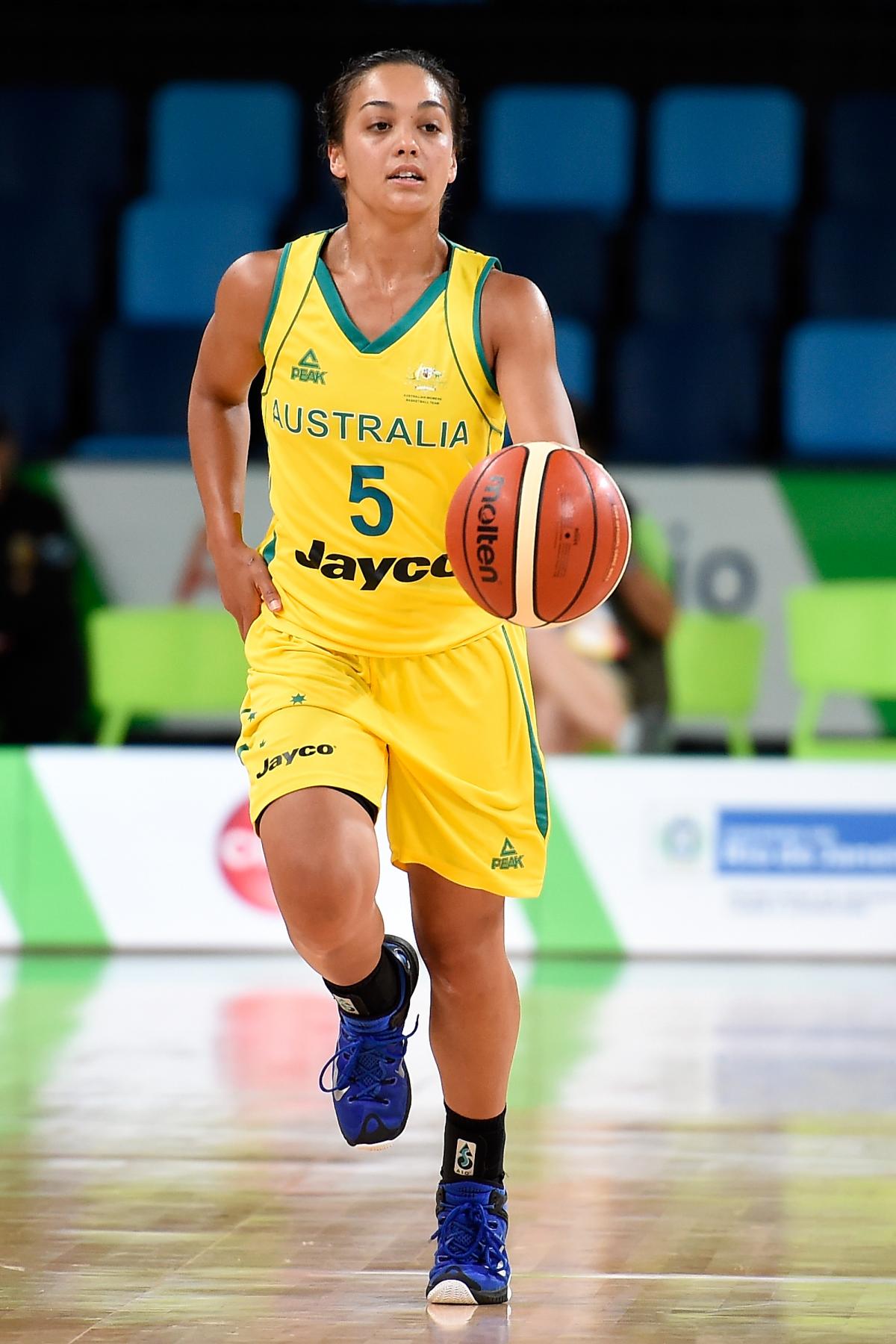
The team successfully appealed the uniforms and got a two-piece uniform with loose-fitting shorts and a snug, sleeveless shirt. (Photos: Jesse D. Garrabrant, Buda Mendes)
Together with a fashion designer, Stentler started to redesign women’s uniforms. Most innovations came naturally to Stentler, who had seen first-hand what was needed. ‘All girls wear tights underneath their shorts for when they make slides. So our Liona shorts have built-in tights. Their waistbands are wider for more comfort. Shirts are longer than those for men and wider at the hips. We created socks in smaller sizes. Also, we created a presentation suit and a training suit, so you look professional off the field as well.’ The response to Liona has been overwhelmingly positive. Luckily, it is not just praise that is rolling in, but orders as well. Liona has just supplied FC Twente with its women’s team uniform and the team is raving. ‘This is what is needed in the long run to create more confidence, to attract sponsors, and to lift the sport to a higher level.’
Stentler is not alone in seeing massive opportunities for women’s sports uniforms. With the availability of great sports gear, the vicious circle female athletes have found themselves in can become an upward spiral: the better the professional gear, the better the player. The better the player, the bigger the audience. With bigger audiences comes more sponsorship, allowing more women to have a career in sports.
Princess Reema Bint Bandar Al Saud is looking forward to lobbying sports brands to meet the needs of Muslim women. ‘The market is not just girls in the Middle East. There is a pan-Islamic diaspora. Imagine a young girl in Birmingham who wants to compete. Why would you exclude her from the game?’
Anne Skovrider of Hummel agrees. At the end of the day, access to the sport is what it should be all about: ‘Let these girls go out, play, get fit, learn teamwork, get confidence, feel good about themselves. That is what we want to support.’

